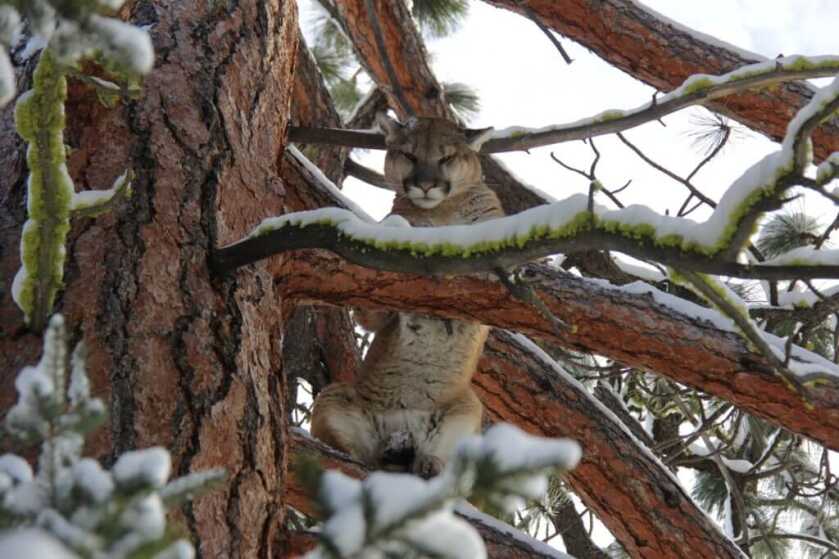
The truck door shuts hard having a thick layer of ice crusting over the hinges. The warm welcoming mountains are now cold and dark. The roads that you gladly travel during warmer months have become treacherous now covered in snow and the spinning tires nearly beg for chains to keep going. Everything looks different in the dark and that holds even more true when the landscapes are covered in a fresh blanket of snow. The hounds know they are about to go to work, stirring anxiously in the box, ready with anticipation.
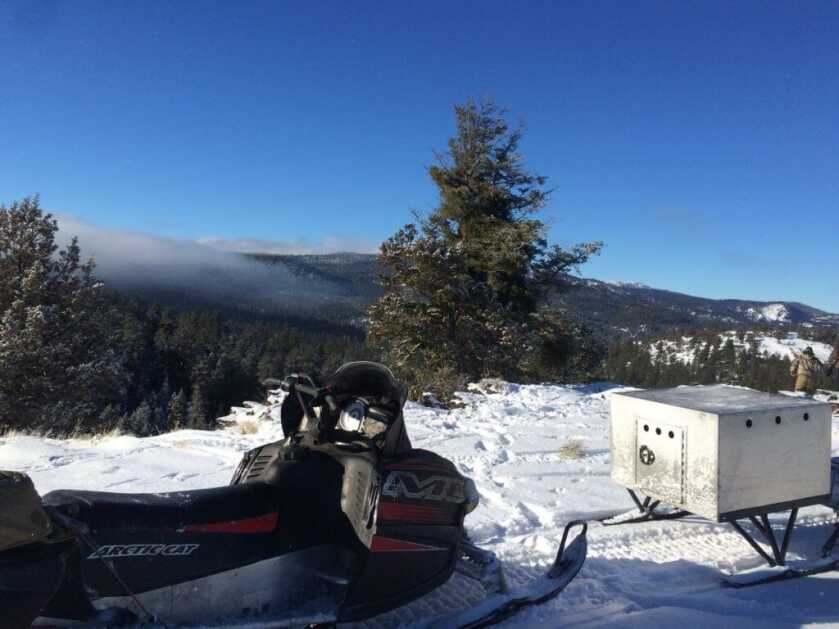
If it is adventure that you seek, then you will find it hunting mountain lion, bobcat or lynx in the winter months. These hunts can be extremely physical and being well-prepared can certainly enhance your experience. Knowledge of the terrain that you are hunting is your first step towards success. Good mapping software like, OnX Hunt’s offline feature will help to locate access roads and provide a 3D view of an area. You will be able to identify forested areas or barren areas where you may find the hounds baying up cats in cliffs. Knowing what to expect in an unpredictable situation is helpful.
There is a lot that goes into a successful hunt and a lot of it has to do with the snow conditions and timing. Depending on where you are hunting and what species you seek, you may be able to hunt all night long with flashlights, or you may only be allowed to hunt during daylight hours. Hunting any type of cat with hounds is highly regulated and it is of the upmost importance that you have a comprehensive understating of the state you intend to hunt’s individual regulations for each species as they typically vary for mountain lion, bobcat and lynx.
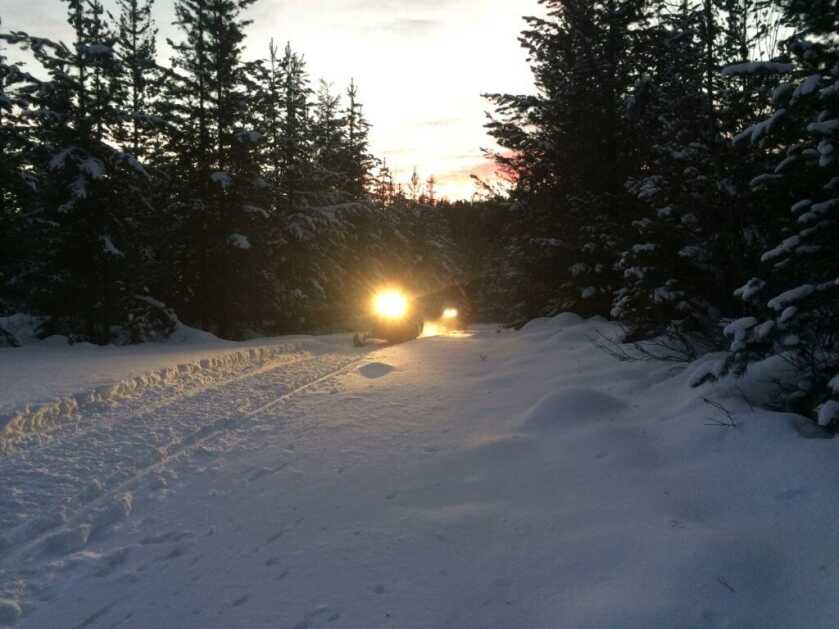
Depending on the snow conditions, cutting tracks will be done from a pickup truck, ATV or snowmobile, which happens long before daylight breaks. The goal is to locate the right track which can take a few short hours or sometimes, even days.
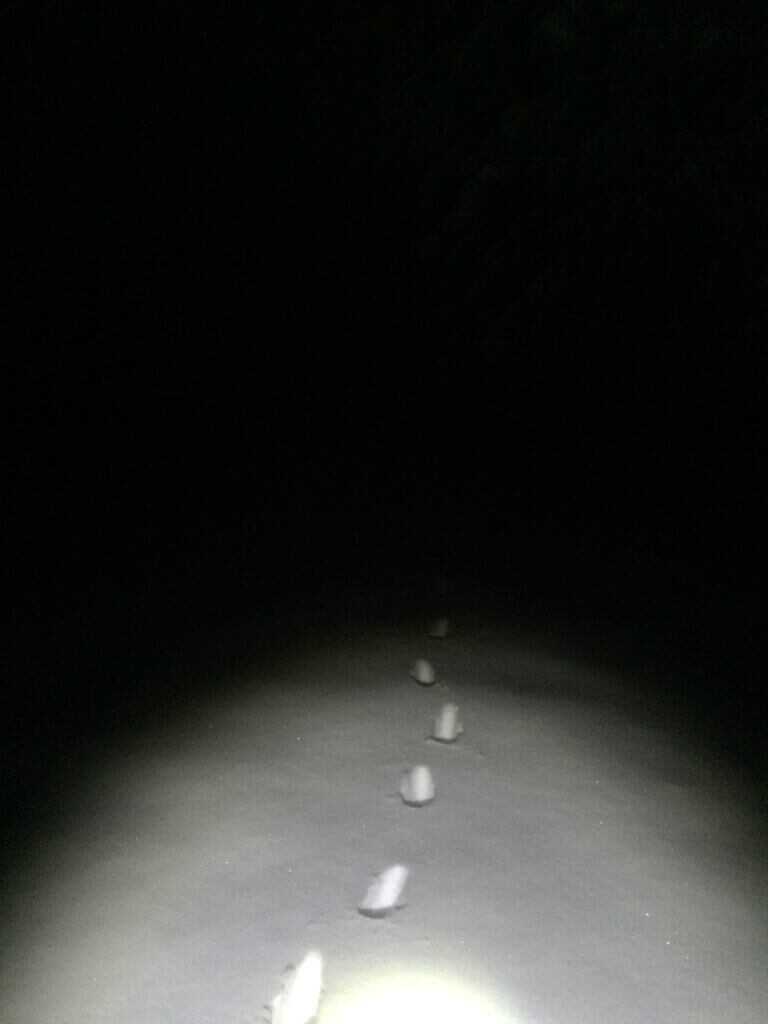
Cats move at night and do not typically move in bad weather, so the timing of your hunt also matters. Ideally, it snows during the day, stopping before it gets dark giving the cats the opportunity to move at night while in a fresh blanket of snow. If however, it snows all night long, stopping in the early daylight hours, the hunting may not be good until the cats have a chance to move the following night, meaning your hunt may not get any action until the next day.
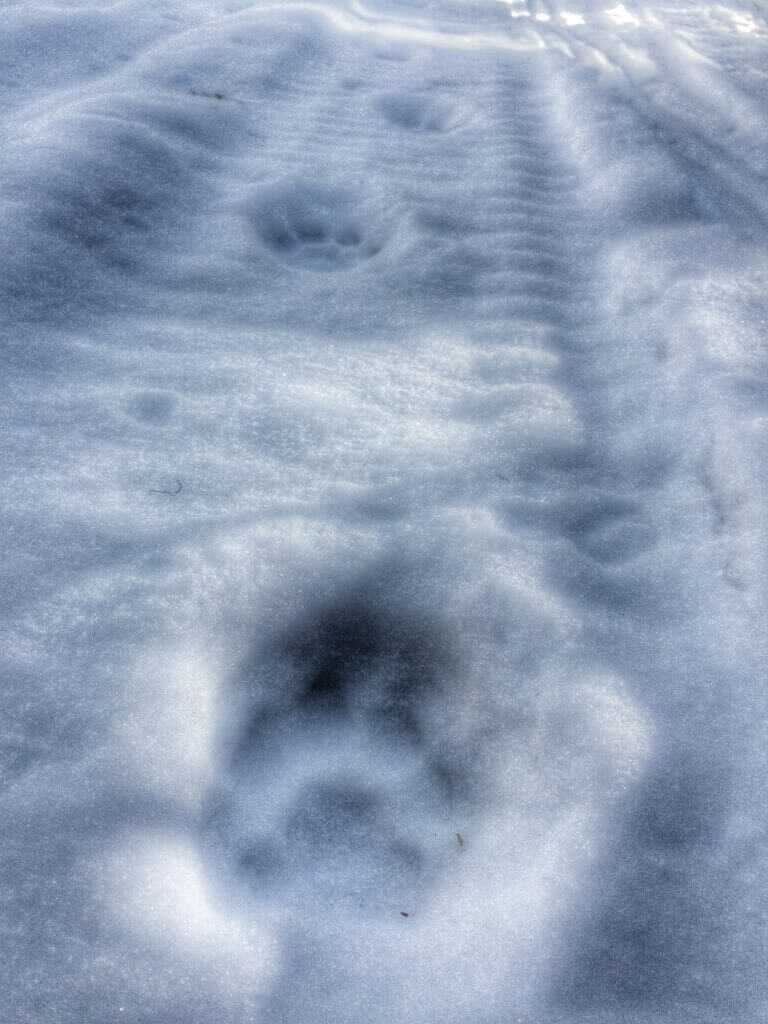
Turning out the hounds on the wrong track in the wrong conditions will only wear you and the dogs out. When temperatures are sub-zero, it is important to help the dogs as much as possible. When it comes to hunting cats good snow is critical. If the snow is hard and crunchy, the smaller cats like bobcat and lynx will walk on top of the snow’s surface and never break through, leaving no track. When the snow is slushy and wet, the track will not leave as much scent which can make it more difficult for the hounds to follow. When the snow is too old, even if the consistency of the snow is good, it becomes more difficult to age the track that you are examining.
You are going to see a lot of rabbit, squirrel, deer, elk, coyote tracks and in some cases wolf tracks. Coyotes and bobcats can be easily confused in certain snow conditions, if the track is nice and round and does not show toenails, then it is likely a bobcat.
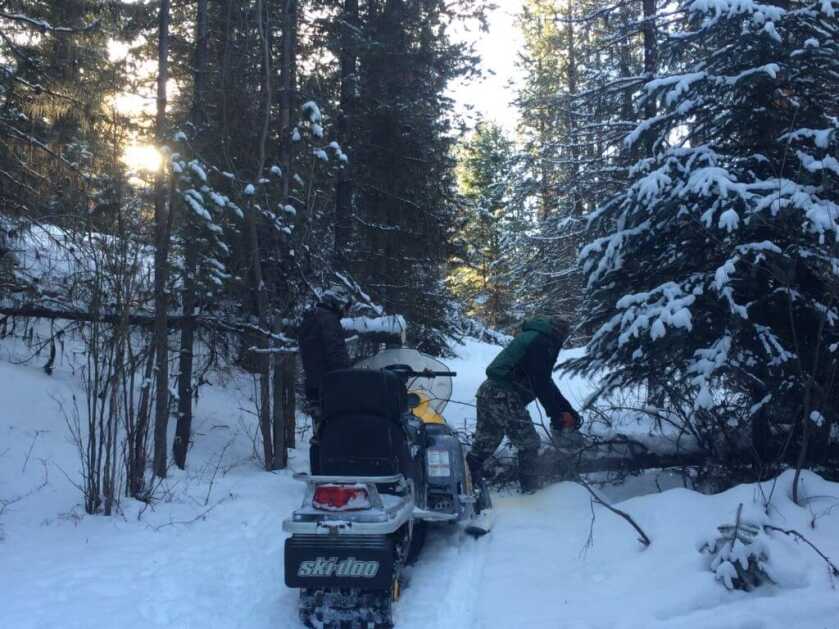
Between tracks, you may encounter fallen trees or branches which must be cleared in order to hunt. Having a chain saw along is a good idea to make this process faster.
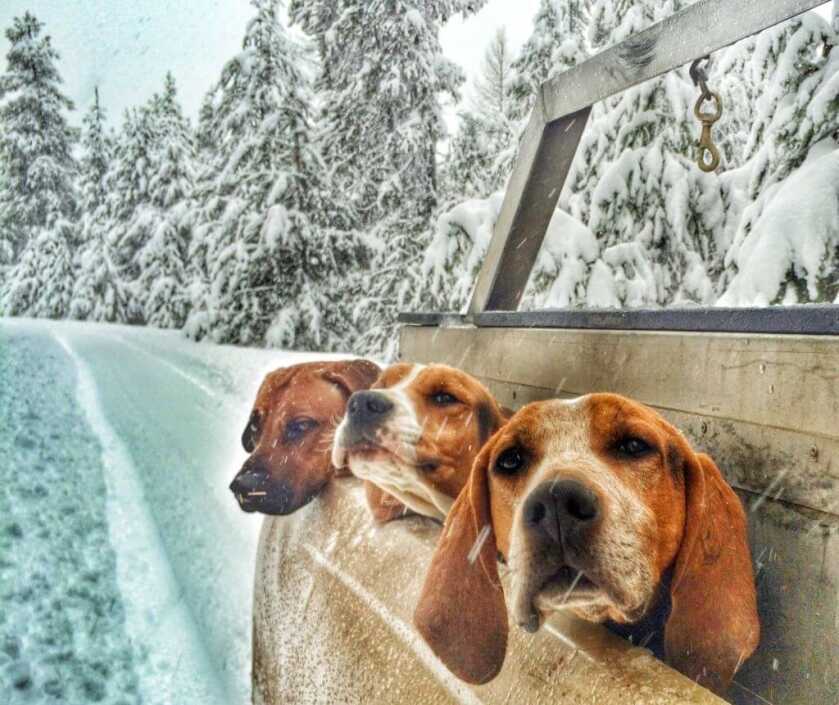
Once you find the right track, or one that is large enough to indicate a tom and not travelling in pairs, for example a female with kittens, use the existing roads to circle the area to make sure the cat has not travelled too far. The last thing a hounds-man wants to do is turn out his dogs only to find that that same cat crosses another road some 5 miles away and you could have turned out in a closer location. You are always considering the health of the dogs making your best effort to ensure the shortest race with the freshest track and best likelihood of a positive outcome.
Once turned out, the pace for these hunts will vary by species and with terrain and snow conditions. Often, hunting bobcats or lynx is much slower pace than that of a mountain lion because the smaller cats leave less scent. Many hounds will not use their eye-sight to visually track but instead they may literally place their nose into each track getting little dimples of snow on the tip of their nose in the tracking process.
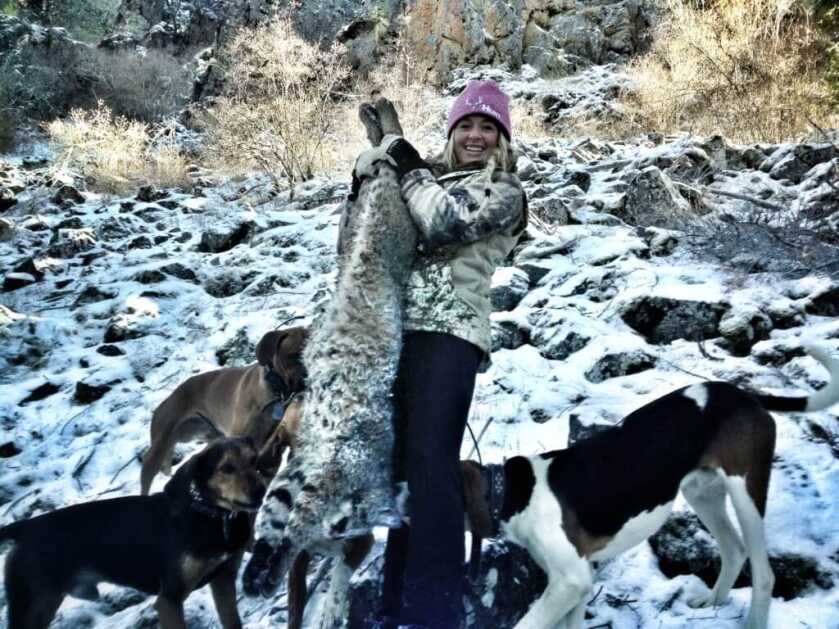
Watching the dogs, how their tail twirls on track, and how the sound of their bark changes as they strike hot scent is a delight for any hunter. The GPS monitor will keep track of each dog giving a visual as to whether the dogs are trailing or they have treed their quarry. Regardless of where the dogs go, or what happens, eventually, you have to follow them afoot to collect them.
Turning them out on a good track late in the day may not be advised. If you get to a successfully treed cat after legal shooting light, you will end up collecting dogs letting the treed cat go. Be prepared that if you find the right track, at the wrong time of day you may need to wait until the next day to ensure that the dogs can tree the quarry during hunting hours.
Hiking western mountains without snow is tough and in snow its really tough. Physically you need to be prepared for long, exhausting hikes. Remember, you must go wherever the dogs end up. Most of the time, that is on foot.
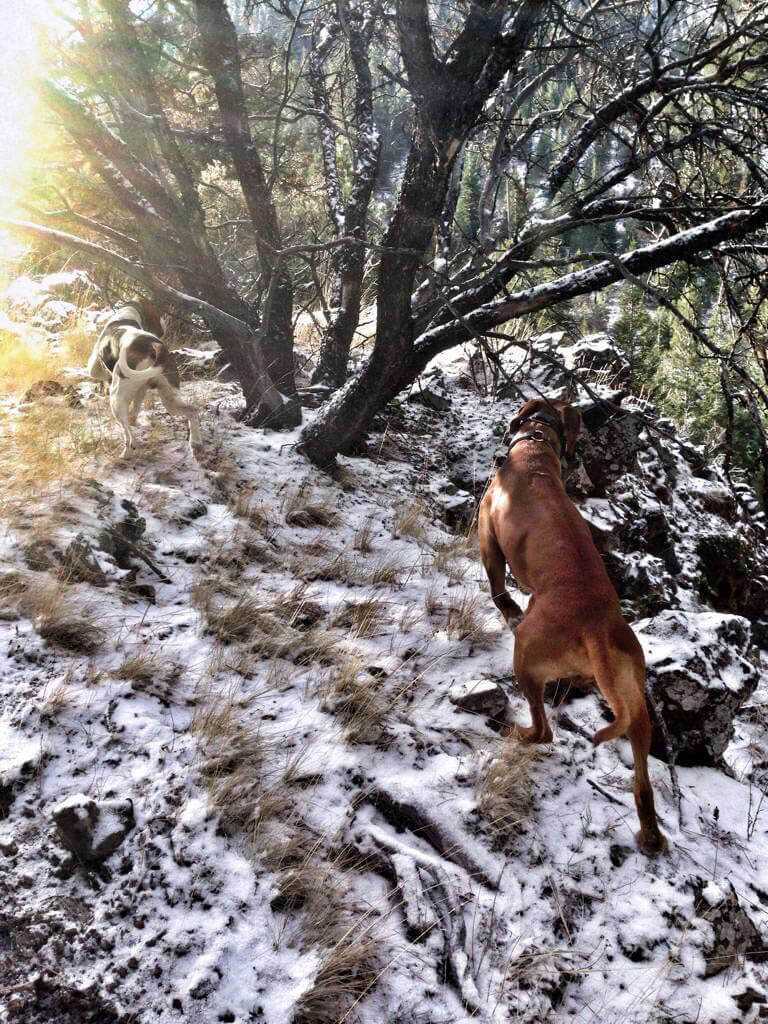
Starting with clothing, you need to be prepared to stay warm for upwards of 12 hours while riding a snowmobile and yet cool enough to hike in deep snow. Dressing in layers is critical.
Kryptek clothing has a huge assortment for both men and women that start with a good base layer and work out from there. On top, fleece is a nice mid-layer because it is warm and dries out fast if you happen to fall in the snow and get it wet. Wearing a vest is a great way to add warmth over your fleece top without adding bulk. Look for synthetic materials like polyester insulation that offer both breathability and warmth.
Down jackets are an excellent choice that is super warm yet light weight. Look for down materials that are treated for water resistance to ensure functionality.
Weather conditions in the winter change rapidly. A water-proof outer layer will keep you dry and protect as a good wind barrier on an ATV or snowmobile.
The addition of snow gators will help keep the snow from tumbling into even the tallest of boots and help keep your feet dry should you encounter any creek or water crossings along the way.
Bring along at least two pairs of waterproof warm gloves. Gloves get wet in snowy conditions easily and you may be thankful that you have an extra dry pair as the day progresses. Store your extra pair of gloves in a dry bag or gallon zip lock bag to prevent them from getting wet. A beanie or balaclava on your head is not only warm, but also a light weight without a lot of bulk.
Waterproof insulated boots are a must. The Hanwag Alaska GTX is available in both men’s and women’s specific models and have a high protective rubber rand and Gore-Tex lining. They provide solid ankle support for steep terrain along with a stiff mountain sole that will make a tough trek much more comfortable.
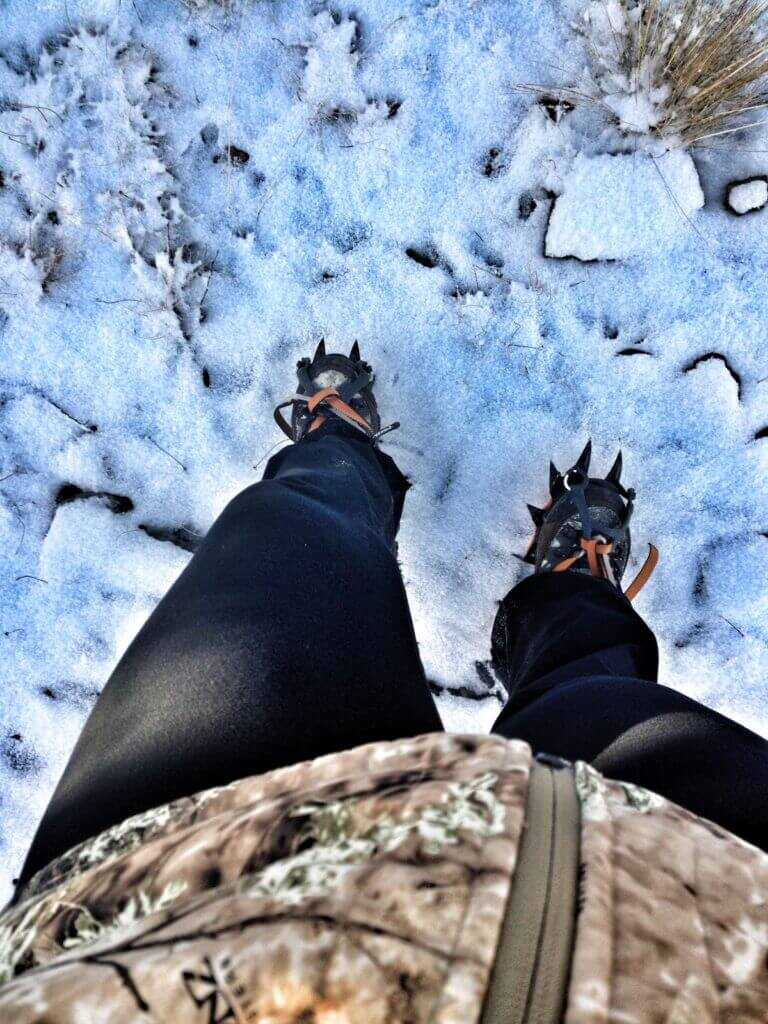
Depending on the snow conditions, you will want to bring along a quality pair of crampons for added traction that will make your hike slide free and much easier. In extremely deep snow, you will want to have a pair of snowshoes and possibly a trekking pole.

If you are riding an ATV or snowmobile, the addition of a helmet will not only keep you safe, it is also warm. Eye goggles are also wonderful especially if the cold is bitter and it is snowing. A light-weight snow shovel can save you a lot of effort in a buried snow machine.
Bring along a daypack that is loaded with the essentials that you may need while getting to the tree but that is also large enough to help with the pack out. The Kifaru 14r has a durable water-repellent fabric that has an overall weight of 3 pounds 13 ounces empty with 2,400 cubic inches of storage space that is rated to hold around 75 pounds.
Don’t forget the small stuff that matters. A headlamp and small compact hand-held flashlight are a must. Bring at least one extra set of batteries for each of your flashlights because the cold air drains batteries quickly. Extend the life of your cell phone with a light-weight portable power bank. A few hand or body warmers remove the chill of the winter weather without adding bulk.
Pack enough water to remain hydrated and/or for cooking. Easy to eat snacks like the Wilderness Athlete Rebar, jerky, or mixed nuts will give you energy for a long day on the mountain. There is nothing nicer than a hot cup of coffee or lunch in sub-zero temperatures. MSR reactor stoves or Jet Boil stoves are light weight and boil water quickly so that you can dine on a hot dehydrated lunch like Peak Refuel or sip fresh hot coffee, all day long. You can opt to put the kitchen in your backpack or leave it at your snowmobile or truck. Either way, you will enjoy a hot treat on a cold day.

Mountain hunting for cats can be very challenging, so come prepared by being in good physical condition with your best knowledge of the area and surrounding terrain along with good equipment and you will have an excellent winter hunt.
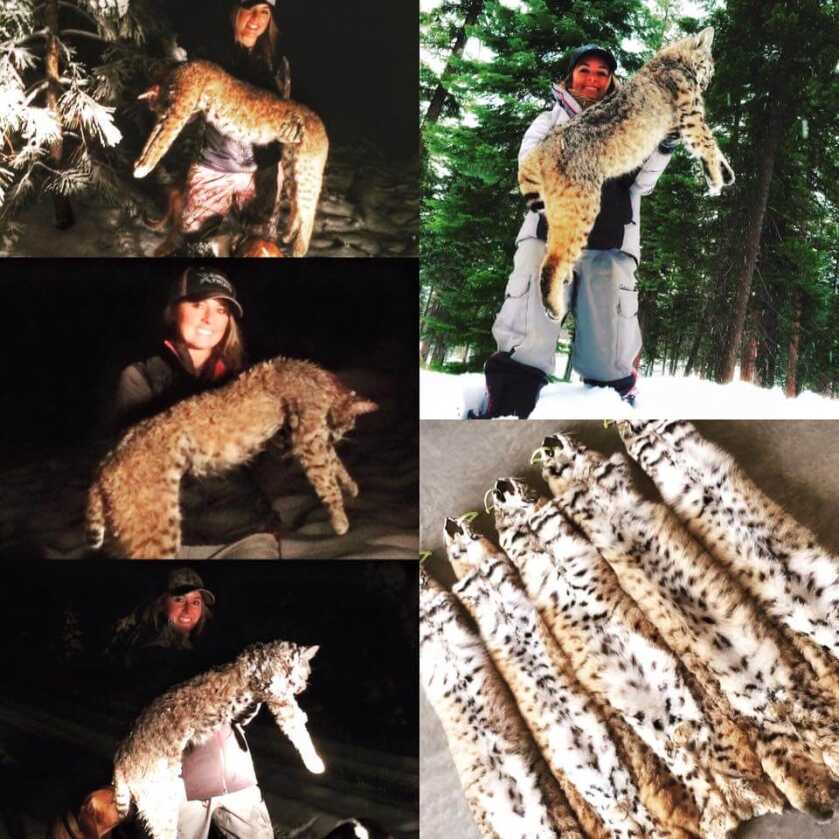


I would go hunting with you anytime!! I have many cats around my property. Wish we could use dogs to hunt them!
VERY GOOD ARTICLE WELL WRITTEN.PLEASE KEEP THE COOD WORK.